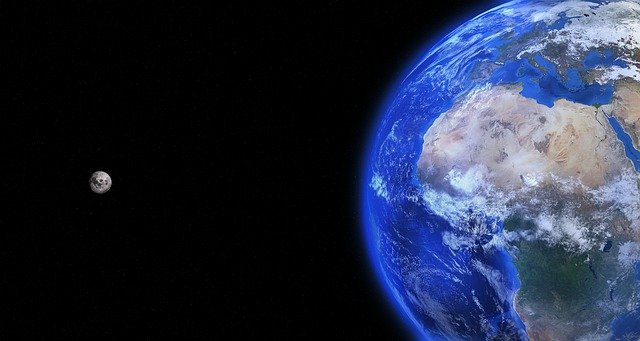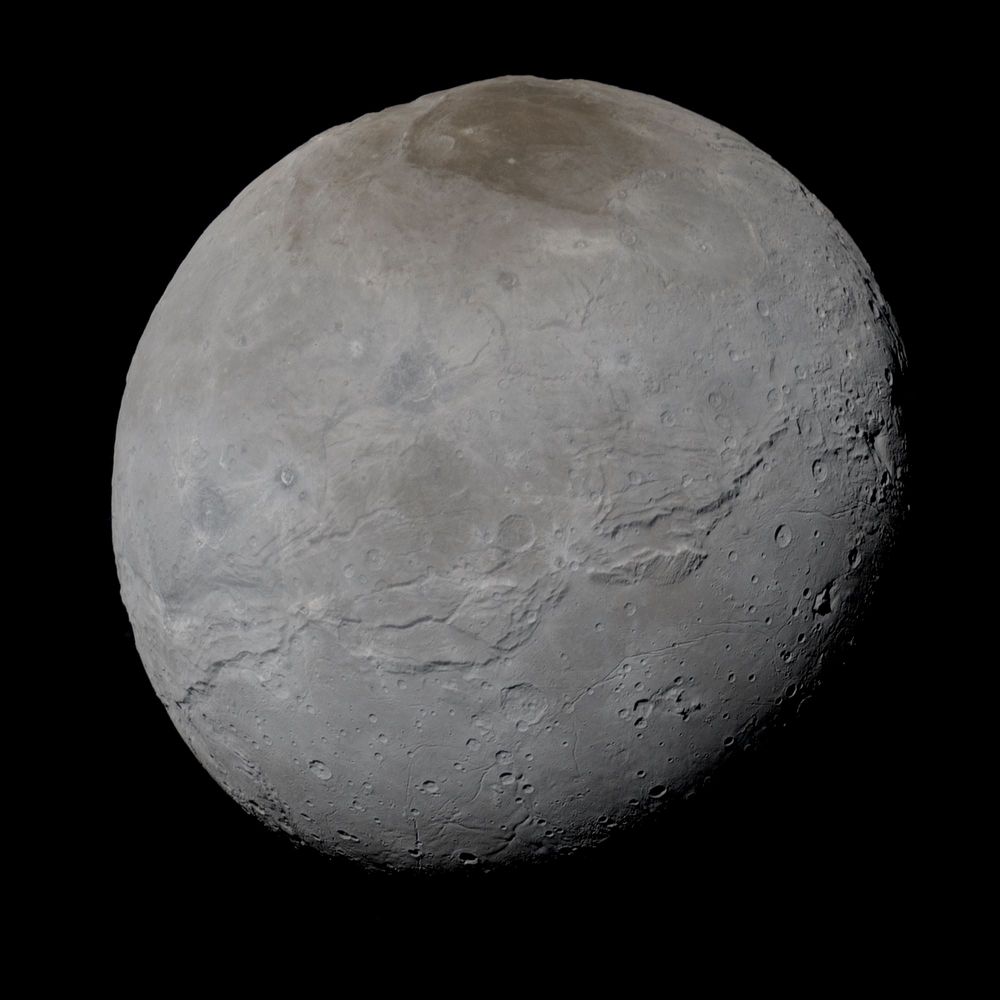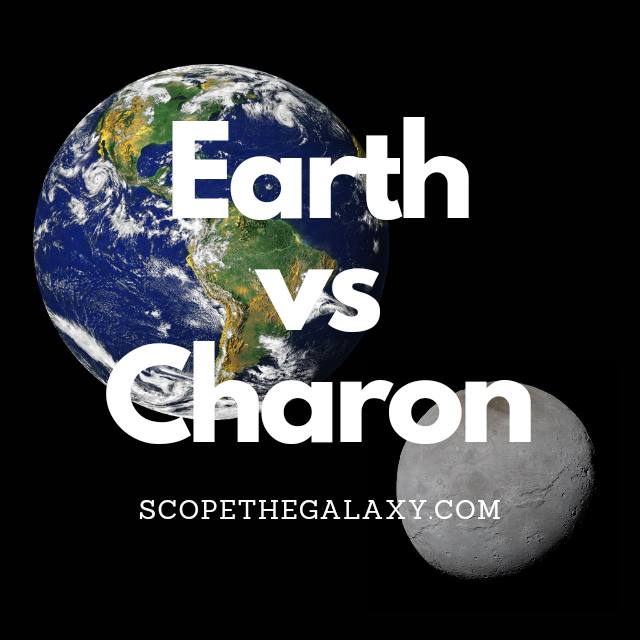*This post may contain affiliate links. This means we may make a commission if you purchase an item using one of our links*
The main differences between Earth and Charon is that Earth is the 3rd farthest planet from the Sun and has a diameter of 12,724km whilst Charon is the joint 9th farthest planet from the Sun and has a diameter if 1,212km, Earth is a planet whilst Charon is a moon and Earth is also the only celestial body in our solar system able to support and sustain intelligent life.
There are various other differences between the two so, continue reading for a more detailed look at each body below along with their similarities and differences.
What Is The Planet Earth?
Table of Contents

Our home planet Earth is the 3rd farthest planet from the Sun, made up of a mixture of water and solid rock like objects, and is the only entity in our solar system known to allow intelligent life forms like ourselves to exist.
Earth’s distance of 152 million km from the Sun has allowed it to remain within the goldilocks zone and as a result, the planet has been able to thrive for millions of years. It orbits the Sun in a circular pattern, much like all the other planets, has only one natural satellite which would be the Moon and is a terrestrial planet to boot.
In regards to its diameter, Earth is the 5th largest planet with a diameter 12,742km.
Earth’s temperature ranges based on the region you’re located where it can be from as low as -94 degrees Celsius in Antarctica to as high as 50 – 55 degrees Celsius in Tunisia.
As for the planets composition, it consists of the crust, the mantle, the outer core and the inner core, where the inner core is the hottest element within the Earth reaching temperature in excess of 5,200 degrees Celsius.
In regards to some of its most unique features, Earth is around 71% water, has an atmosphere consisting mostly of oxygen and nitrogen that is also made up of 5 main layers, with the highest to lowest being the troposphere, stratosphere, mesosphere, thermosphere and exosphere.
A day on Earth is 24 hours and an orbital cycle around the Sun takes 365 days to complete. It’s axial tilt is more distinct at 23.5 degrees to the right.
What Is The Moon Charon?

Charon is the largest of Pluto’s moons, first discovered on 22nd June 1978. The surface of this icy world is frozen with nitrogen and methane ice; it may also hold some water ice. While Pluto possesses a reddish hue, Charon is closer to a neutral shade of grey; this suggests the two bodies have different compositions.
Scientists named this moon after the mythical ferryman, Charon, who once carried souls across the Acheron river. This river is one of five legendary rivers that could lie beneath the surface of Pluto.
The formation of Charon remains something of a mystery to scientists. However, this moon may have formed around 4.5 billion years ago when an object traveling at immense speed collided with Pluto. Its average distance from the Sun is approximately 3.6 billion km.
Charon is almost half the size of its planet at 1,212km, where scientists refer to these two bodies as a “double dwarf planet system,” and the chilly temperatures vary from minus 23 to minus 258 degrees Celsius.
Charon takes 153 hours to orbit its planet at an average distance of 19,640km, and it is tidally locked, meaning the same side of the moon always faces Pluto. Pluto also experiences a tidal lock to Charon, so the same two sides always face one another.
Among the fascinating features of this ice moon are the ice volcanoes that could exist on the surface. Observations from the Gemini observatory suggest that Charon could have a form of cryovolcanism known as ice-particle geysers.
The frigid world also has a canyon between seven and nine kilometers deep. (To put that into perspective, Mount Everest has a height of 8.8km).
Similarities Between Earth And Charon
Charon and Earth do have their odd few similarities, which in this case includes the below:
- Both have a hotter central core.
- Both have an atmosphere and a rocky surface.
- Both are a spherical shape.
- Both are part of the same solar system.
- Both have no rings surrounding them.
Differences Between Earth And Charon
- Earth is the bigger of the two with a diameter of 12,742km compared to Charon’s diameter of 1,212km.
- Charon does not have tectonic plates whilst Earth does.
- Earth has a magnetosphere whilst Charon does not.
- Earth has 1 moon orbiting it whilst Charon has 0 objects orbiting it.
- Charon orbits Pluto in an elliptical pattern whilst Earth orbits the Sun in a nearly circular pattern.
- Charon is tidally locked to Pluto whilst Earth isn’t tidally locked to any other object.
- Earth has an atmosphere with 5 main layers whilst Charon has a no significant atmosphere to speak of.
- A day on Charon takes 153 hours whilst Earth completes a day in 24 hours.
- Earth orbits the Sun in 365 days whilst Charon orbits the Sun in 247.78 years and around Pluto in 157 hours.
- Charon’s density is 1.71 g/cm³ whilst Earth’s density is 5.51 g/cm³.
- In regards to their axial tilt, Earth’s is 23.4 degrees whilst Charon’s is practically 0 degrees.
- Earth’s average temperature is 13.9 degrees Celsius whilst Charon’s temperature is -23 to -253 degrees Celsius.
- Earth is able to sustain intelligent life whilst Charon cannot.
- Charon has no water cycle whilst Earth does.
- As for mass, Charon’s is 1.58 × 10^21 kg whilst Earth’s mass is 5.972 × 10^24 kg.
Summary
Although Earth and Charon are part of the same solar system and are terrestrial in their composition, the two are very different from one another.
Whether it be in regards to mass, size, atmosphere, the length of their days, their temperature differences and beyond which is why Earth and Charon are so unique and distinct in how they function.

